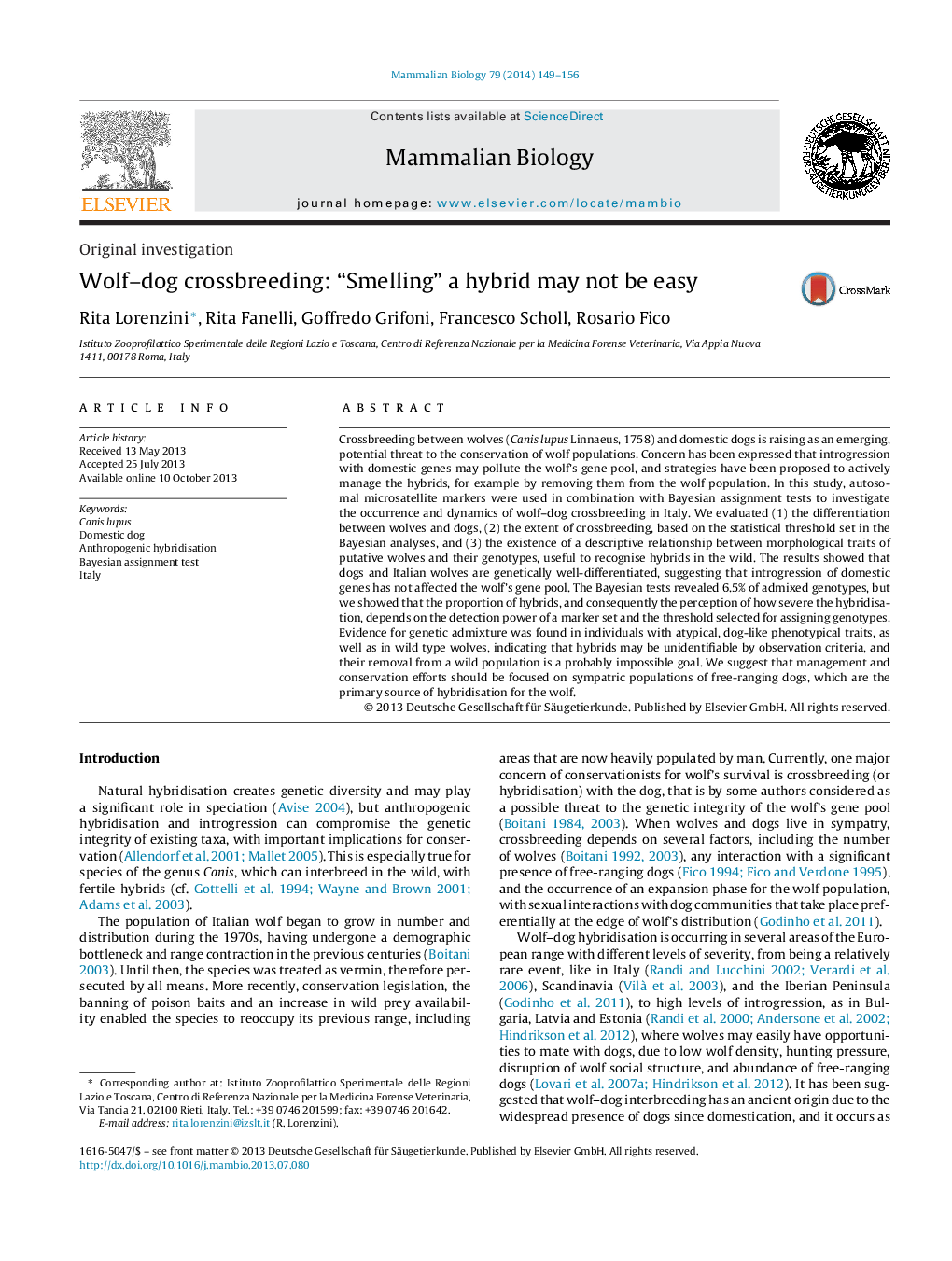| کد مقاله | کد نشریه | سال انتشار | مقاله انگلیسی | نسخه تمام متن |
|---|---|---|---|---|
| 2193681 | 1098392 | 2014 | 8 صفحه PDF | دانلود رایگان |

Crossbreeding between wolves (Canis lupus Linnaeus, 1758) and domestic dogs is raising as an emerging, potential threat to the conservation of wolf populations. Concern has been expressed that introgression with domestic genes may pollute the wolf's gene pool, and strategies have been proposed to actively manage the hybrids, for example by removing them from the wolf population. In this study, autosomal microsatellite markers were used in combination with Bayesian assignment tests to investigate the occurrence and dynamics of wolf–dog crossbreeding in Italy. We evaluated (1) the differentiation between wolves and dogs, (2) the extent of crossbreeding, based on the statistical threshold set in the Bayesian analyses, and (3) the existence of a descriptive relationship between morphological traits of putative wolves and their genotypes, useful to recognise hybrids in the wild. The results showed that dogs and Italian wolves are genetically well-differentiated, suggesting that introgression of domestic genes has not affected the wolf's gene pool. The Bayesian tests revealed 6.5% of admixed genotypes, but we showed that the proportion of hybrids, and consequently the perception of how severe the hybridisation, depends on the detection power of a marker set and the threshold selected for assigning genotypes. Evidence for genetic admixture was found in individuals with atypical, dog-like phenotypical traits, as well as in wild type wolves, indicating that hybrids may be unidentifiable by observation criteria, and their removal from a wild population is a probably impossible goal. We suggest that management and conservation efforts should be focused on sympatric populations of free-ranging dogs, which are the primary source of hybridisation for the wolf.
Journal: Mammalian Biology - Zeitschrift für Säugetierkunde - Volume 79, Issue 2, February 2014, Pages 149–156